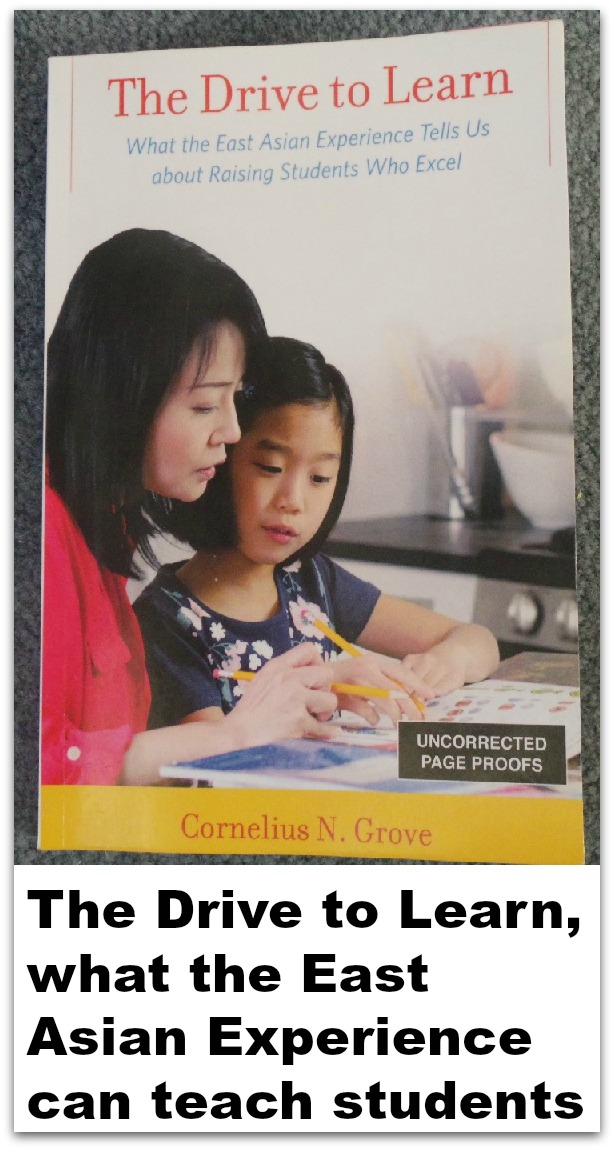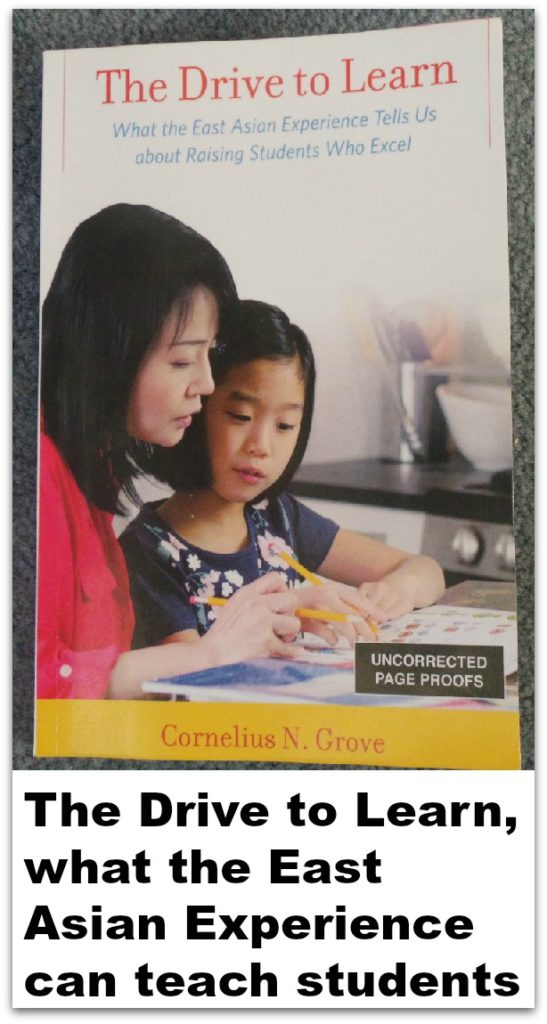Podcast: Play in new window | Download
Subscribe: RSS
The Drive to Learn by Dr. Cornelius N. Grove is a book whose subtitle drives its topic. What the East Asian Experience Tells Us about Raising Students Who Excel is a subtitle that might intimidate those outside of academia, but don’t worry. When said together, The Drive to Learn, What the East Asian Experience Tells Us about Raising Students Who Excel, lets readers know that the book is going to paints a full picture as to why the reality of the smart Asian student exists.
I was tempted to type in ‘stereotype’ instead of ‘reality’ in that prior sentence. However, by any measure, students outside of East Asia retain less knowledge and score lower on tests across the board then children anywhere else.
What The Drive to Learn establishes from the beginning is that the book is not an attack on western teachers. In speaking with Dr. Grove he’s obviously a huge fan of teachers, as well as the overall education process. The preface for the book sets out why the book was written, how it was written and who it’s written for. It’s important to point that out because there are differences in how content is presented, how the students receive it and to what degree it’s handled at home.
As a book, The Drive to Learn has a thick notes section at the end and bibliography. Dr. Grove has culled through hundreds of various sized studies conducted in East Asia, as well as, other books that focus on education or culture. This is a book that’s deep with information, notes, numbers and takeaways for parents and educators who want to nail down what’s working-and what’s not working with western education.
In a nutshell, it’s all about the approach and expectations. For example, East Asian students memorize things. It’s rote memorization, repeating after the teacher and touching the words in their books as they repeat them. But memorization doesn’t allow my creativity to shine through or my child wouldn’t sit still long enough to do that. Other parents might want their child to discover the answer on their own, because you don’t want to stifle their independence.
One key take away from the book is that East Asian school expects their children to come to school as a vessel for learning. The teachers are authority figures who present the information in a way that they are expected to learn it.
To some people that may sound like pie-in-the-sky thinking. But what about the kid who acts like this or the student that has one parent or any number of unique situations. Granted, educating children is a complex matter and no two situations are unique. However, to assume that students in East Asia don’t have any of the same hurdles that kids in western countries have is incorrect.
As a parent I understand all of those viewpoints. However, as a former educator in Japan, I approach the conversation with a different perspective.
Class sizes in China are huge, in elementary school they’re around 30, while high school students typically have classes with 50 or more students. The educational machinery in East Asia spends less money on each pupil than in western countries, yet they consistently test higher.
There are countless dog-eared pages in The Drive to Learn that I kept coming back to. It’s not a reference book per se, but the information is such that I wanted to re-read it again just so I could truly absorb and learn the lessons. That methodology is an underlying difference between education in Asia and the west.
In both areas the schools give out homework, but in East Asia it’s presented under the auspice that more work must be done at home. Once at home, Asian parents will sit down with their child-or send them to an after school home work program, to master the principles that were introduced.
Many parents will find the cultural differences between how children and family are perceived fascinating. In East Asia the child is perceived as having a role within the family. In America the child is perceived as ‘me’, a family member but separate. Asian children also directly perceive their failure as a result of the family, and that pressure keeps them on the path to academic success more so than in other countries.
In my interview with Dr. Grove he shared with me a story about parents interacting with their children. The cover of The Drive to Learn has a mother helping a young girl with her homework. They aren’t having fun, they’re simply doing work together and it appears that the student is learning. Grove’s search for a photo took him through various photo libraries, but all of the photos had parents and children playing together, which is not the story that the cover wanted to tell. Dr. Grove had to have the photo ordered because one showing a parent and child studying together didn’t exist.
The book also has lots of quotes from Asian students who attended school in the United States and then went back home or vice versa. Their observations are fascinating. If you’re a person who thinks that kids don’t want to be challenged or don’t like school for questionable reasons their quotes can be a game changer. When you first open the book you see a quote from a sixth grade student who was comparing academic expectations in Japan to the U.S. “(in America) you didn’t really have to really, really do it.”
The Drive to Learn is a great overview as to why Asian students score higher and achieve more. The answer is not what some parents want to hear, but it’s what they need to know if they want their child to succeed on a level that they deserve. Doctor Grove manages to parlay these lessons in a way that doesn’t make western parents feel guilty or lazy; but it points out precisely what their Asian counterparts are doing to make their kids learn and retain more.






 Facebook
Facebook Twitter
Twitter Flickr
Flickr GooglePlus
GooglePlus Youtube
Youtube